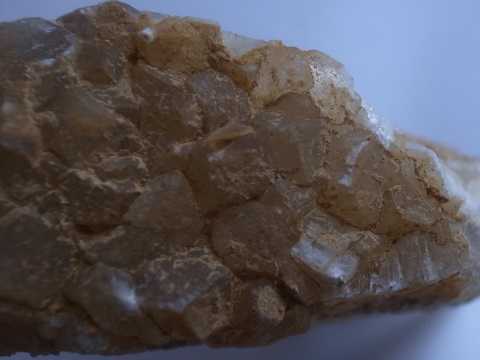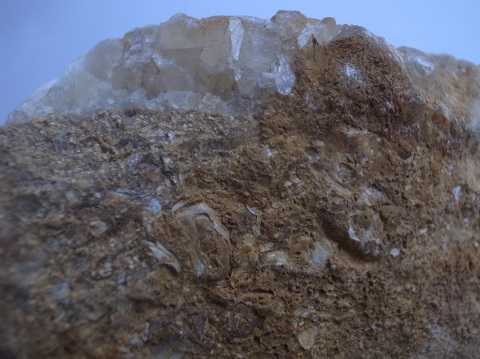Calcite
Cotswolds region
England, UK
Source for Quick lime and Sodium cyanide

Field of view: 50 mm. Granular crystals of calcite. Granular calcite crystals are growing in the open spaces of a calcite vein cutting the Cotswolds oolitic limestone. The vein is approximately 15 mm width. The host oolitic limestone contains many fossils of shellfishes. and is utilized under the name of Cotswolds stone.
Recovered from an open space of a calcite vein in the Middle Jurassic oolitic limestone, which is a warm shallow marine sediments.

Field of view: 50 mm. Cross section of the calcite vein. The clear veinlet at the top is calcite. The pale brown host at the lower side contains shell fragments. This surface is parallel to the bedding plane. Fossils shells are aligned parallel to the bedding plane. The matrix of shell fragments are composed of white globular oolitic grains.
Other localities
- Chichibu Mine (Hydrothermal Skarn, Scalenohedral)
- Horado Mine (Hydrothermal Skarn, Granular)
- Nakatatsu Mine (Hydrothermal Skarn, Rhombohedral)
- Waga-Sennin Mine (Metasomatic Skarn, Scalenohedral)
- Choshi (Andesite, Granular)
- Kodomari (Hydrothermal, Scalenohedral)
- Shobusawa (Au-Ag vein, Scalenohedral)
- Mount Futago (Limestone, Rhombohedral)
- Koma (Calcareous sandstone, Twin)
- Cotswolds (Oolitic limestone, Granular)
- Iwakake (PrP facies, Scalenohedral)